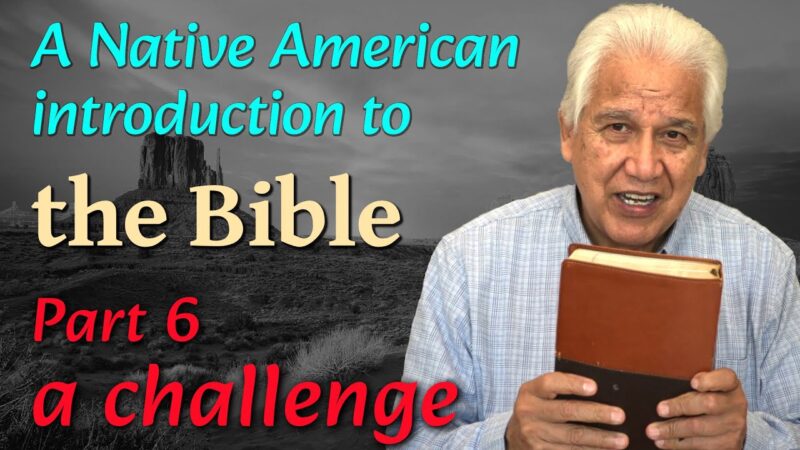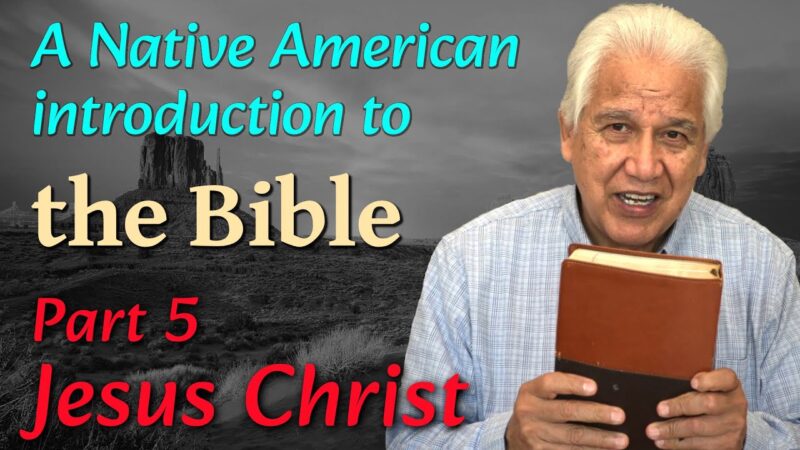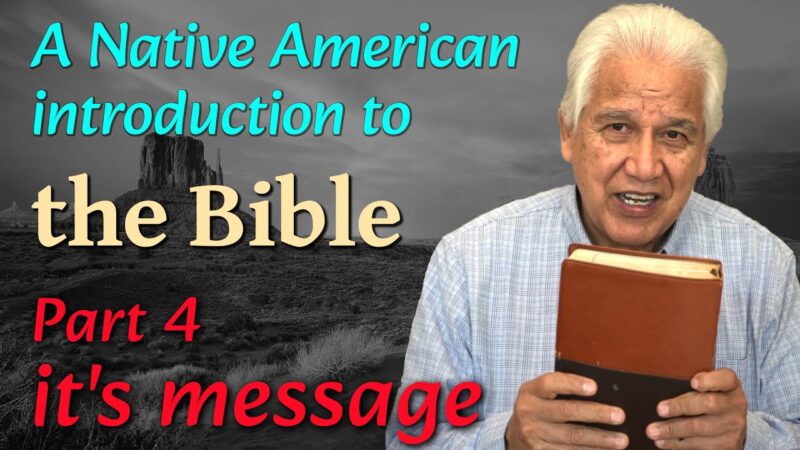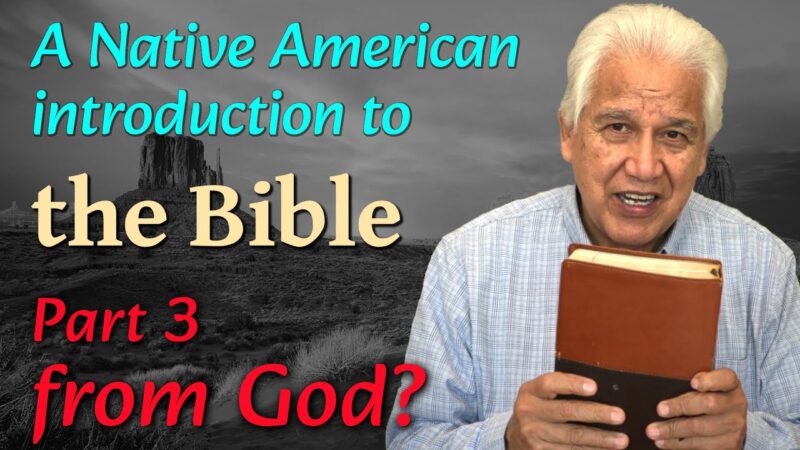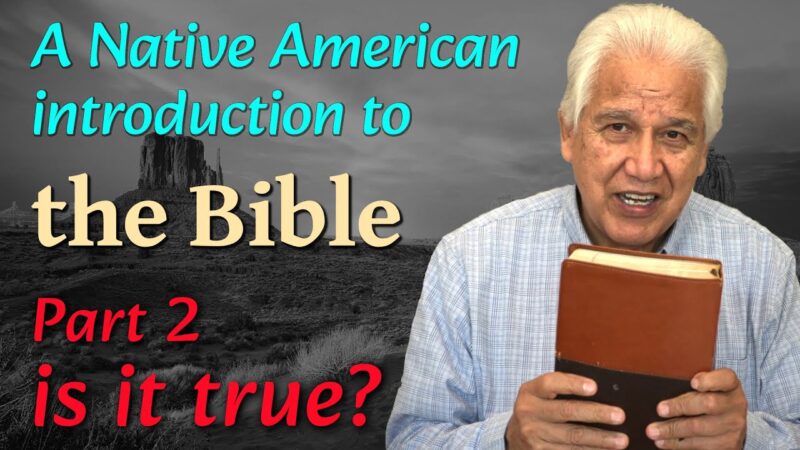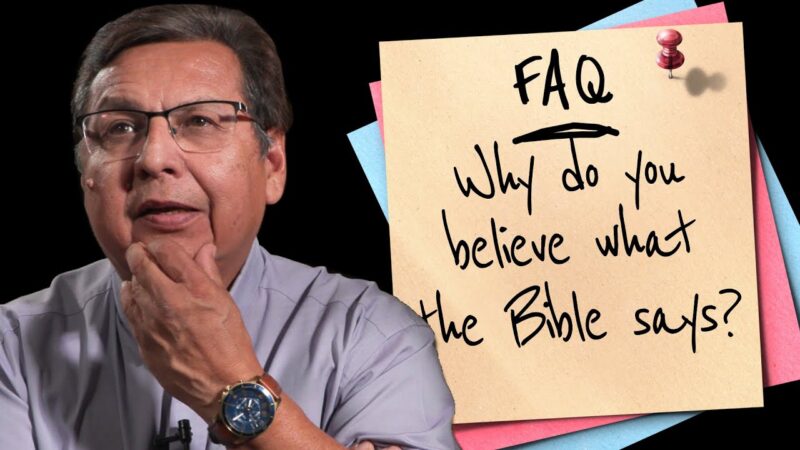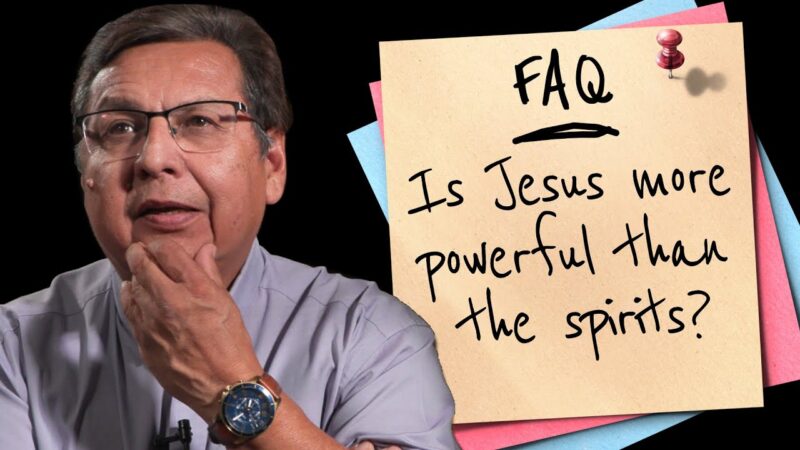Native American Introduction to the Bible: Part 6 – Final Thoughts and a Challenge
If it’s true that our Creator has reached out to us, why wouldn’t we want to know what He says?
🍃 Watch the six-part series by Mescalero Apache, Soapy Dollar, here: https://www.youtube.com/playlist?list=PLm4Y5qad3GcTF3swbs_1mvaD-E-ty_UdV
This series on the Bible for Native American, First Nation, and Indigenous people is taught by Mescalero Apache, Soapy Dollar. Soapy is passionate about what he calls, the Book of books, the Bible.
Part 6 – Read it for yourself! There’s no better way to learn about the Bible and it’s message than to actually read it for yourself. And because it is a Divine Book, you can expect that God will speak to you through it – especially if you are open to hearing from Him. In Psalm 119, the writer uses 176 verses to describe the value of God’s words to him. Perhaps among the most famous of these is verse 105 which says. “Your word is a lamp to my feet and a light to my path.” Millions of people, including many from Native North America have decided to follow the path to life that the Bible illuminates for those who desire to walk with God.
Key Points in Part 6:
– Read this book and you’ll hear from Himself. It won’t be just a book that we read for all people everywhere and a wonderful message. God will speak to your heart and you will
hear His call to a relationship to Himself.
– If the Creator has reached out so that you could be in relationship with Him, and if He has done so through this book we call the Bible, why not respond by picking up the Bible and reading it.
– If you start in the Old Testament, when you read, keep in mind, though, that redemptive narrative of God, and you’ll see the Messiah, you’ll see the Redeemer, you’ll see God’s plan of salvation for all people everywhere. It’s never about just one group of people. It’s all about the world. That wonderful verse in the New Testament, “God so loved the world.” It’s evident, even as you’re reading about the experiences of a particular people group through history and their ups and downs and their experiences, a lot of things we can learn, but always we learn that these same things that God is speaking to all of us, to every people group everywhere.
– If you’re interested in beginning to read this incredible gift that we have from God and to see what its message would be to you, you may also consider starting in the Gospel of John in the New Testament for a couple of reasons. One, is because you’re in the full-blown light of the Messiah. The Redeemer, the Savior that had been predicted and foretold all of those centuries is now here. And you get to see Him and hear Him and watch Him, how He fulfills those prophecies in His life and what He does to make it possible for fallen, sinful human beings like me, like all of us, to be reconciled to God the Father.
Secondly, because John actually writes his book with that purpose in mind. “I have written these things so that you might believe,” so that you might be able to know God, hear His voice, and enter into that relationship with God yourself. And that’s, of course, what my ultimate pleasure and joy would be, is if you read the book and you come into that relationship with God, both for here on planet earth and forever, and to become a part of the people of God. From every tribe, every language, every, every people group on planet earth, to be with Him now and on to eternity.
—–
Here is the outline for following along in the series.
Soapy Dollar – A Native American Introduction to The Bible
Part 1 – Introduction and The Bible is Unique
It is Unique
– In it’s consistency
– In it’s circulation
– In it’s translation
– In it’s survival
– In it’s teaching
– In it’s message
Part 2 – The Bible is True and Accurate
Tests and Evidence
– The Bibliographical test
– The Internal test
– The External test
– Archeology
Part 3 – Is the Bible from God our Creator?
Why do we think this?
– It’s amazing consistency
– It has a “ring of truth”
– Fulfilled predictions and prophecies
– The life of Jesus
– Transformed lives
Part 4 – The Message of the Bible
The Central Message of the Bible
– God loves and cares for us
– We are sinful, selfish, guilty, and condemned
– God sends a Savior
– We must respond in faith
Part 5 – The Central Character – Jesus Christ
Jesus Christ is the central character of the Bible
– His person and redemptive work is foretold in the Old Testament
– His person and redemptive work is fulfilled in the New Testament
Part 6 – Final Thoughts and a Challenge
A Brief Summary and God has gone to great lengths to communicate with us
– Pick up the Bible and read it for yourself
Listen to Soapy’s personal story: https://www.youtube.com/watch?v=GHD0Av50Hss
Visit our website: www.withoutreservation.com

